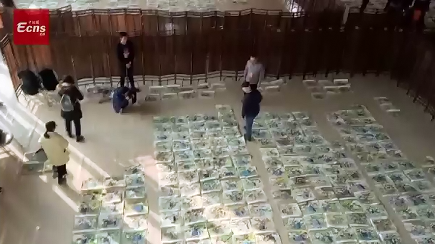With the real estate market experiencing fluctuations this year, both the supply side and demand side, at different times, have indicated the realty market would cool down. And many are worried whether the cooling trend will continue next year.
The real estate market's performance has shown a "W-type" trend this year. In the first quarter of the year, the real estate sector experienced a downturn, and market expectations were relatively pessimistic. From the second quarter to August, the property market performed well, and it seemed the market was on the rebound.
But the recovery didn't last long. In September and October, the traditional "golden months" for housing sales, there was no rebound in real estate market transactions. Pessimistic sentiment spread again, and many local real estate developers launched discount promotion campaigns to sell their housing units. The pessimistic sentiment gradually started fading in November with the launch of direct and indirect stimulation policies. And although people, in general, believed the property market's downward tendency might not change, the degree of their pessimism was not as high as before.
Third-and fourth-tier cities have been playing a major role in deciding the direction of the property market this year. Especially, after the central government announced it was determined to adjust the monetary settlement policy for shantytown renovation, the over-heated realty markets in third-and fourth-tier cities have gradually cooled down, which in turn has led to the cooling down of the entire real estate market-although the easing of the bank loan policy in local areas, too, helped local real estate market transactions to recover.
In 2019, the real estate market's downturn trend is likely to continue. In general, the market will show an "L-type" trend, instead of a "V-type" trend, next year.
In the first half of next year, the property market will continue to cool down, especially in the cities that have imposed strict housing purchase control policies. But by the second half of 2019, market transactions could rebound because some control policies, such as eligibility for purchasing house and restrictions on purchasing a second house in some regions, may be eased by that time. Such a rebound may not be universal, though; it may be confined to some third-and fourth-tier cities.
As market transactions show an "L-type" trend, housing price changes are also expected to follow the "L-type" trend. Still, the housing price trend may continue to lag three months behind the market transaction trend.
In general, from January to September next year, housing prices will gradually decline, but could rebound in the fourth quarter.
Another important factor that influences market direction is the bank loan policy, which is more likely to be eased in the next stage, because the banks' allocated amounts for loans are sufficient to meet the existing demand.
But a major part of the housing purchase demand suppressed in the second half of this year could be released in the first half of 2019.
The strict real estate control policies in some cities, mainly the first-and second-tier cities, may be eased to a certain extent if market transactions decline sharply. In addition, with the rapid development of metropolitan areas, many satellite cities show ever-increasing transportation and regional advantages, which means the real estate market in some small and medium-sized cities near provincial capitals may warm up again next year.
The author,Yan Yuejin, is research director of the E-house China R&D Institute.


















































